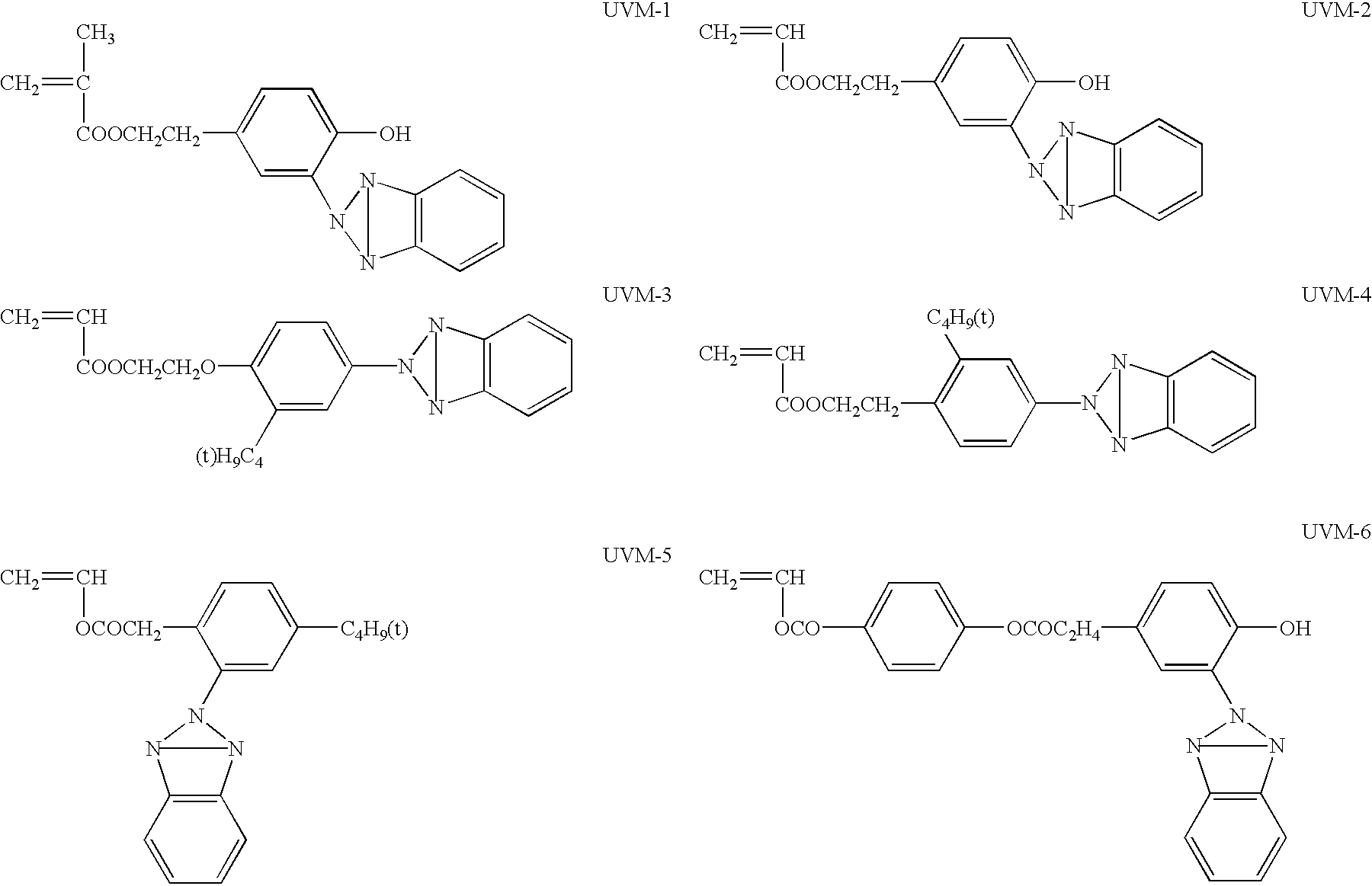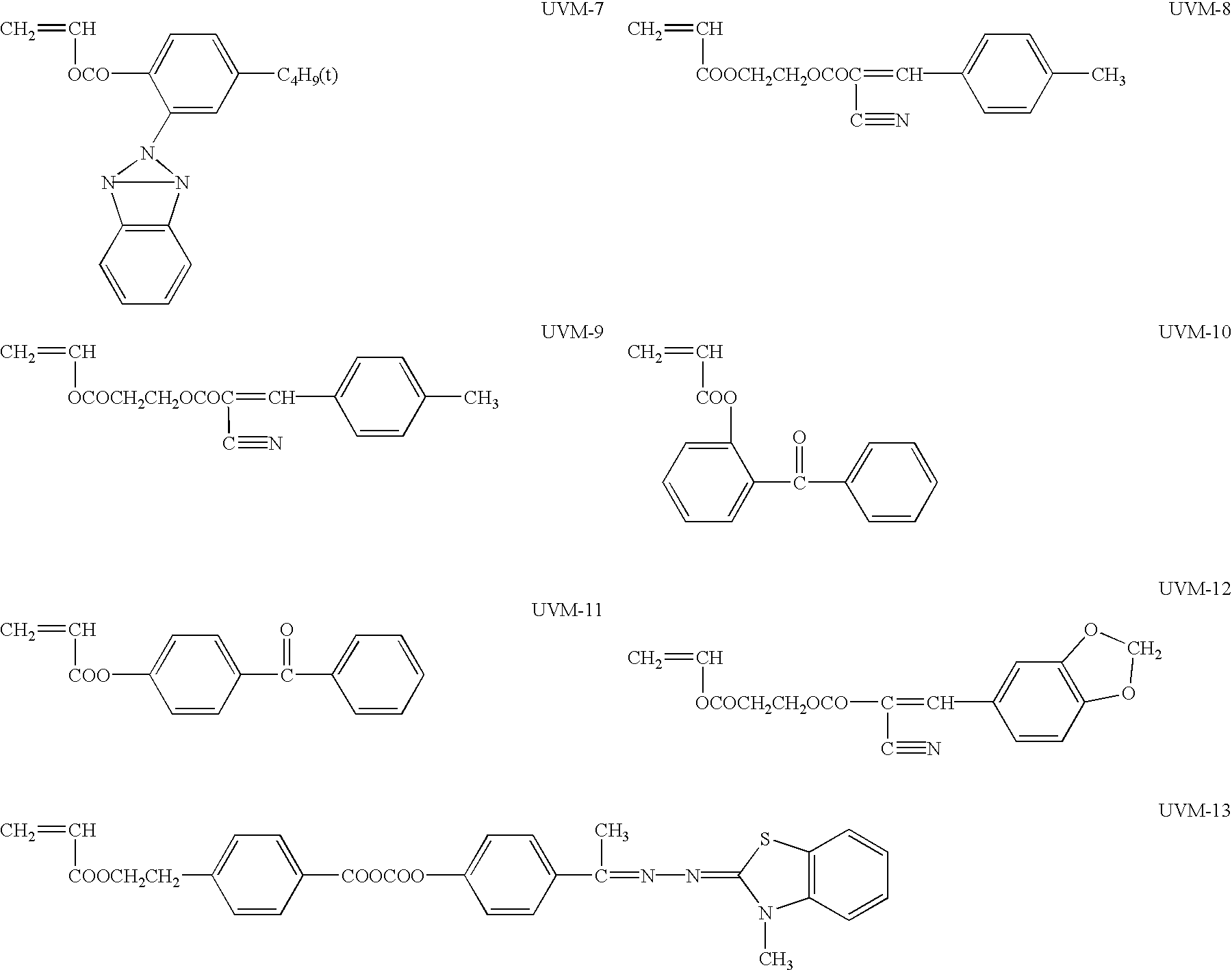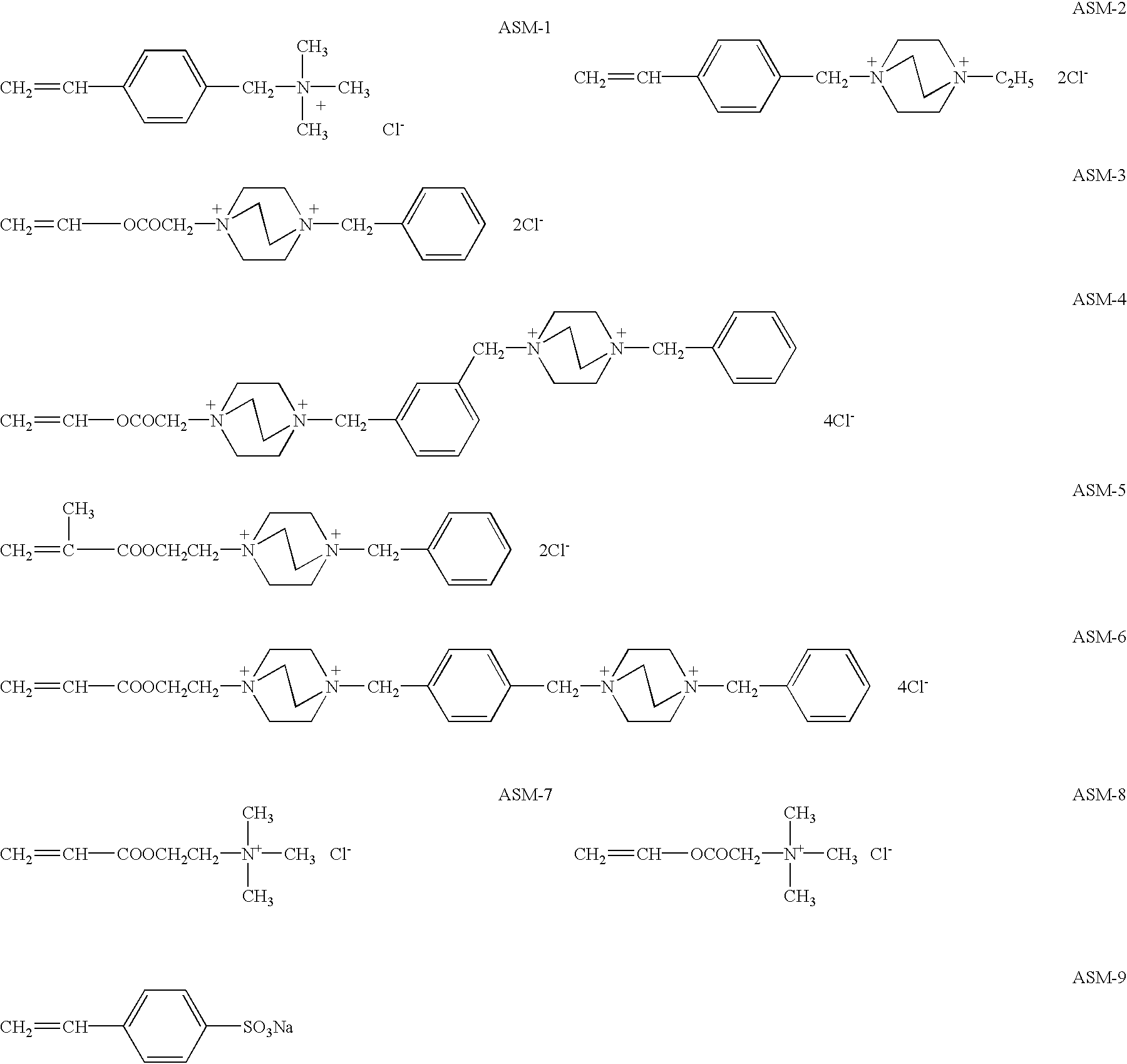Cellulose ester film, cellulose ester dope, protective film of polarizing plate and polarizing plate
a technology of cellulose ester and cellulose ester, which is applied in the direction of polarizing elements, textiles and papermaking, optical filters, etc., can solve the problems of reducing the performance of a liquid crystal display using the film at high humidity, increasing the thickness of cellulose ester, and minimizing water resistance, so as to achieve excellent retention properties, low elongation and shrinkage, and low moisture vapor permeability
- Summary
- Abstract
- Description
- Claims
- Application Information
AI Technical Summary
Benefits of technology
Problems solved by technology
Method used
Image
Examples
synthesis example
Polymerization of P-1
[0143]A 100 ml three-necked flask was charged with 36 g of a vinyl acetate monomer and 4 g of a vinyl laurate monomer. The flask was evacuated using a vacuum pump, and replaced with nitrogen three times. To the flask were added 60 ml of anhydrous tetrahydrofuran and the resulting solution was heated under reflux. A tetrahydrofuran solution containing 30 mg of α,α′-azobisisobutyronitrile (AIBN) was added to the solution, and further heated under reflux for additional 3 hours. After evaporating the reaction solvent under reduced pressure, the residue was dissolved in the smallest possible amount of tetrahydrofuran to obtain a solution. The resulting solution was re-precipitated in water, and the resulting precipitates were filtered off. Thus, polymer P-1 was obtained. The monomer content ratio, vinyl acetate to vinyl laurate ratio in the P-1 was 90 / 10 by weight. The molecular weight of the polymer P-1 was measured according to GPC, and the weight average molecular...
examples
[0186]The invention will be detailed according to the following examples, but is not limited thereto.
examples 1 to 11
(Preparation of Cellulose Triacetate Film Samples 1 to 11)
(Dope Compositions 1 to 11)
[0187]
Cellulose triacetate with an acetyl100 weight partssubstitution degree of 2.88(a number average molecular weight: 150, 000)2-(2′-hydroxy-3′,5′-di-t-butylphenyl)2 weight partsbenzotriazoleOne of polymers 1 to 11 synthesized as15 weight partsdescribed belowMethylene chloride475 weight partsEthanol50 weight parts
[0188]Each of dope compositions 1 to 11 was incorporated in a sealed vessel, and stirred at 70° C. to obtain a cellulose triacetate (TAC) dope (hereinafter referred to simply as a dope). The dissolution time was 4 hours. The resulting dope was filtered. The filtered dope of 35° C. was uniformly cast on a 22° C. stainless steel belt support employing a belt casting apparatus to form a web, and dried until peeling of the web from the stainless steel belt was possible. At peeling the residual solvent of the web was 25% by weight. The time taken from the dope casting to the peeling was 3 minu...
PUM
| Property | Measurement | Unit |
|---|---|---|
| RH | aaaaa | aaaaa |
| RH | aaaaa | aaaaa |
| thickness | aaaaa | aaaaa |
Abstract
Description
Claims
Application Information
 Login to View More
Login to View More - R&D
- Intellectual Property
- Life Sciences
- Materials
- Tech Scout
- Unparalleled Data Quality
- Higher Quality Content
- 60% Fewer Hallucinations
Browse by: Latest US Patents, China's latest patents, Technical Efficacy Thesaurus, Application Domain, Technology Topic, Popular Technical Reports.
© 2025 PatSnap. All rights reserved.Legal|Privacy policy|Modern Slavery Act Transparency Statement|Sitemap|About US| Contact US: help@patsnap.com



